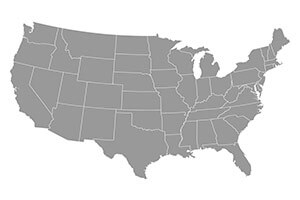
It seems that honey harvests were down in more places than they were up this year. Bad weather played a big part in that, starting with a late winter and a cold, wet spring, which delayed California queens to many parts of the country. Next, heavy flooding in much of the country wiped out spring flows in some parts, while boosting them in others.
Then came drought. It’s beginning to sound like a Biblical plague. Here’s a message for any beginners reading this: Beekeeping is hard. Education is key, now more than ever.
Northeast—Demand for packages suggests that beekeepers in New Hampshire plan to add colonies in the spring.
New York’s brewers and distillers are increasing their demand for honey. Fortunately, colony numbers have increased this year, along with production per hive. There also continues to be growth in the numbers of new beekeepers, a common theme throughout much of the country.
Pennsylvania saw a drop in production over last year, but colonies are looking good going into winter, with help from the fall goldenrod and aster flow. There was an increase in fall swarms; one August swarm hung out for 8 days high in a maple, surviving days of wind and rain before finally moving on.
In Maine the public looks increasingly for raw honey. Glass jars are also preferred, though few beekeepers offer them.
Mideast—Kentucky’s production was down somewhat for the year, but colony numbers are up going into winter.
Tennessee production was up overall, but a late-season drought knocked out the fall flow. A Scott County beekeeper reports European yellow wasps, but says they are easily drowned in water. Tulip poplar leaves are suffering from an unknown pest that cuts off the blooms.
Virginia honey crops were up for the year, and colony numbers are up slightly.
Southeast—In Florida, imports are “killing honey prices,” and colony numbers are down slightly.
Alabama crops are down a bit as well, but demand for local honey is up. Colony numbers look to be higher in 2020.
Crops are up in Georgia, but a flood of foreign honey is knocking prices down.
Southwest—A Louisiana reporter says honey crops were good, but “we have to do something [about] the importation of foreign honey.”
New Mexico saw a slight increase in colony numbers, but a decrease in production. Demand for local honey remains high.
East Central—Wisconsin honey production was up slightly this year. The WHPA has a plan to train mentors for the next generation.
Illinois honey production was down, as much of the fall crop was rained out. Retail demand in the northeastern part of the state also seemed to be down this fall compared to other years. But demand for propolis is up, and there is money to be made in cutouts by those who are able.
Michigan’s harvest was down a bit over last year. Colony numbers are holding steady.
A mid-November snow brought northern Indiana’s season to an abrupt end. The statewide harvest was down some, but wholesale and retail demand remain strong.
West Central—The Nebraska crop was down, and wholesale markets are not good. “Honey packers don’t seem interested in domestic honey.”
Small packers are looking for Kansas honey, but poor weather overall kept production low for 2019.
Small packers are stocking up on “good” Iowa honey as well. Large packers, not so much, as prices have dropped to as low as $1.50. Honey production was up, including a first-ever bee balm crop in the northeast and a tremendous goldenrod flow. “The learning curve for mites keeps getting steeper,” and many hobbyists are getting discouraged trying to keep their bees alive. But honey is maintaining its health image, so the product will sell itself if one can produce it.
North Dakota saw crops about 20 percent smaller than last year, and wholesale prices are stagnant. Colonies look good going into winter.
Bad weather and a very late start also kept South Dakota’s production down. Wholesale demand is about usual.
Missouri crops were at least 50 percent better than average, as spring flooding provided moisture for heavy summer and fall flows. Local demand remains strong, and a seemingly endless crop of new beekeepers is trying to fill it.


